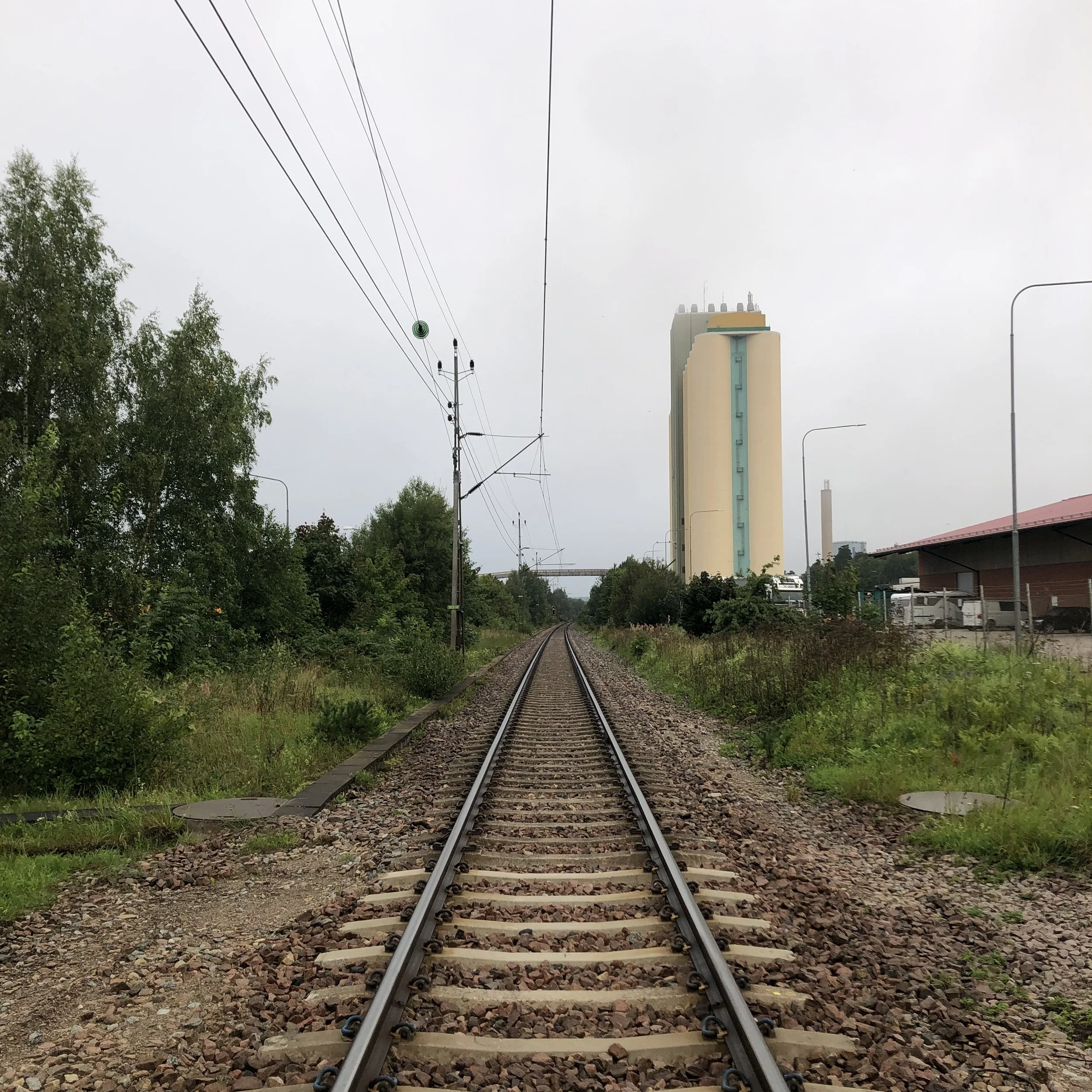Departure and Arrival
Köping, August 2023
Walking on the street with a flag signals urgency and pride. The action signals Here I am and people may be willing to die for their flag. Stuart Mayes explores the meaning of flags on a scale between public trophy and the personal possession. He plays with what it means to walk down the street with a flag made from old hand-sewn sheets. The sheet has to do with bedrooms, with the intimate and most private. Moreover, embroidering sheets is a traditional female craft that contrasts with the pompous nature of the flag.
Departure and Arrival is a three-part work created specifically for the railway stations of Arboga, Kungsör, and Köping. Stuart Mayes works with textiles as materials, which are shaped into flags. The flags displayed at the different locations have their own characters and associations. Stuart's work is about status and is built up layer upon layer of both content and material.
Part 1, Arboga: large scale flags made from sheets – the bed is the place where you sleep, rest, have sex. It is an intimate and personal place for the private self. The exhibition space acts as a viewing cabinet - passers-by can look in from the bus station around the clock and from the train station waiting room during regular opening hours.
Part 2, Kungsör: small scale flags made from napkins, tablecloths, and tea towels – evoking family and company, eating and celebrating with family and friends the social self. The work is installed in existing display cabinets in the station waiting room and is visible during opening hours.
Part 3, Köping: items of clothing presented as mid-scale flags – the street (public environment) is the place where we meet, see, pass each other - a place where some people want to look like everyone else, but there are those who want to mark their identity through their style of dress. These flags are hung on the facade of the station house making them accessible around the clock.
My flag, our flags
The project includes participatory creative workshops in conjunction with each of the three installations. These workshops are offered to the public, youth groups, and schools.
Artist presentation:
In his studio Stuart Mayes collects everyday materials and turns them into works of art. He combines finds from second-hand shops, flea markets and auctions with donated materials and lots of glitter. Men's clothing such as shirts and ties, as well as old sheets, and videotape, are juxtaposed with fabric, wood and other non-traditional art materials - all with the potential to become an installation, spatial design or sculpture. Stuart is interested in the qualities and status of the materials themselves. Many materials carry traces of their history – ingrained dirt and worn spots – that contribute to the meaning of the artworks.
Stuart lives and works in Uppsala, Sweden, was born in the UK and educated at Dartington College of Arts and Slade School of Fine Art, London, as well as The Royal Institute of Art, and Konstfack, Stockholm. He most recently exhibited at Uppsala Konstmuseum's Uppländska Salong. Since 2022, Stuart has been the chairman of Uppsala Konstnärsklubb, and he is the Meetings programme coordinator for Supermarket – Stockholm Independent Art Fair.
About ASK:
Arbetsfält för samtida konst (ASK) is a three-year development project that aims to strengthen the infrastructure and competence for art and design in Västmanland. ASK is run by Region Västmanland in collaboration with Konstfrämjandet and Västmanland's ten local councils. In collaboration with artists and arts organisations in Västmanland, a regional resource center for art was formed that can strengthen the infrastructure and competence for art in the region. Another part of the project is that the councils arrange exhibitions, residencies and other concrete activities in contemporary art with the aim of promoting creative industries, increasing engagement, and establishing collaboration between councils.
The project is financed by the Swedish Arts Council, Region Västmanland and Västmanland's ten local councils.
[text produced by Konstframjändet Västmanland]
